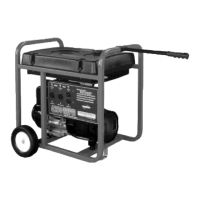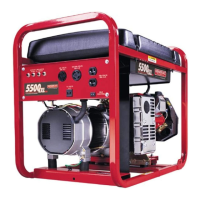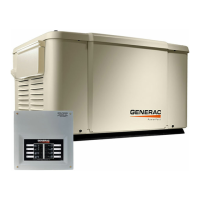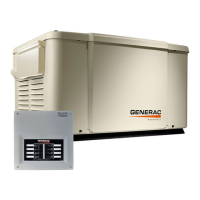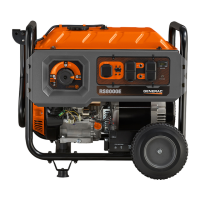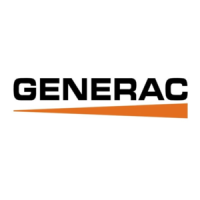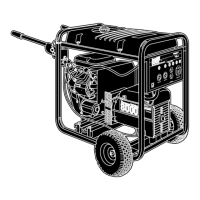Site Selection and Preparation
12 Installation Guidelines For Spark-Ignited Stationary Generators
Fire Codes, Standards, and Guidelines
Generator installation must comply strictly with ICC
IFGC, NFPA 37, NFPA 54, NFPA 58, and NFPA 70 stan
-
dards. These standards prescribe the minimum safe
clearances around and above the generator enclosure.
NFPA 37
NFPA 37 is the The National Fire Protection Associa-
tion’s standard for the installation and use of stationary
combustion engines. Its requirements limit the spacing of
an enclosed generator set from a structure or wall, and
require generator to be located where it is readily acces
-
sible for maintenance, repair, and first responders.
NFPA 37, Section 4.1.4, Engines Located Outdoors:
Engines, and their weatherproof housings if provided,
installed outdoors shall be located at least 5 ft (1.52 m)
from openings in walls and at least 5 ft (1.52 m) from
structures having combustible walls. A minimum separa
-
tion shall not be required where either of the following
conditions exist:
1. The adjacent wall of the structure has a fire resis-
tance rating of at least one hour.
2. The weatherproof enclosure is constructed of non-
combustible materials and it has been demon-
strated that a fire within the enclosure will not ignite
combustible materials outside the enclosure.
Annex A—Explanatory Material
A4.1.4 (2) Means of demonstrating compliance are by
means of full scale fire test or by calculation procedures.
Because of the limited spaces frequently available for
installation, it has become apparent that exception (2)
would be beneficial for many residential and commercial
installations. The manufacturer contracted with an inde
-
pendent testing laboratory to run full scale fire tests.
NOTE: The Southwest Research Institute (SwRI) is a
nationally recognized third party testing and listing
agency. SwRI testing approves 18 in (457 mm) installa-
tion minimum from the rear panel of the generator to an
adjacent structure for fire protection.
For products NOT showing SwRI on the data plate:
• 5 ft (1.52 m) minimum distance if the wall is not fire
rated.
• 3 ft (0.91 m) minimum distance if the wall is one
hour fire rated.
If the data plate indicates the product is SwRI rated:
• 18 in (47.7 cm) minimum distance from a
combustible wall.
The criteria was to determine the worst case fire scenario
within the generator and to determine the ignitability of
items outside the engine enclosure at various distances.
The enclosure is constructed of non-combustible materi-
als, and the results and conclusions from the indepen-
dent testing lab indicated that any fire within the
generator enclosure would not pose any ignition risk to
nearby combustibles or structures, with or without fire
service personnel response.
Figure 3-3. Southwest Research Institute Marking
http://www2.swri.org/www2/listprod/
DocumentSelection.asp?ProductID=973&IndustryID=2
Based on this testing and the requirements of NFPA 37,
Sec 4.1.4, the guidelines for installation of the generators
listed above are changed to 18 in (457 mm) from the
back side of the generator to a stationary wall or building
For adequate maintenance and airflow clearance, the
area above the generator should be at least 5 ft (1.52 m)
with a minimum of 3 ft (0.91 m) at the front and ends of
the enclosure. This includes trees, shrubs, and bushes.
Vegetation not in compliance with these clearance
parameters could obstruct air flow. In addition, exhaust
fumes from the generator could inhibit plant growth. See
Figure 3-2 and the accompanying descriptions.
Generator Maintenance
Regular maintenance is crucial for minimizing exhaust
emissions and reducing the risk of fire or equipment fail
-
ure. For example:
• A dirty air filter or low engine oil level may cause
engine to overheat.
• Incorrect spark plug gaps may cause engine
backfiring and incomplete combustion.
IMPORTANT NOTE: See Maintenance section of gen-
erator owner’s manual to view a table of scheduled
maintenance tasks and procedures. Perform all
maintenance tasks as directed.
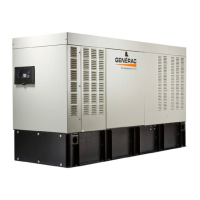
